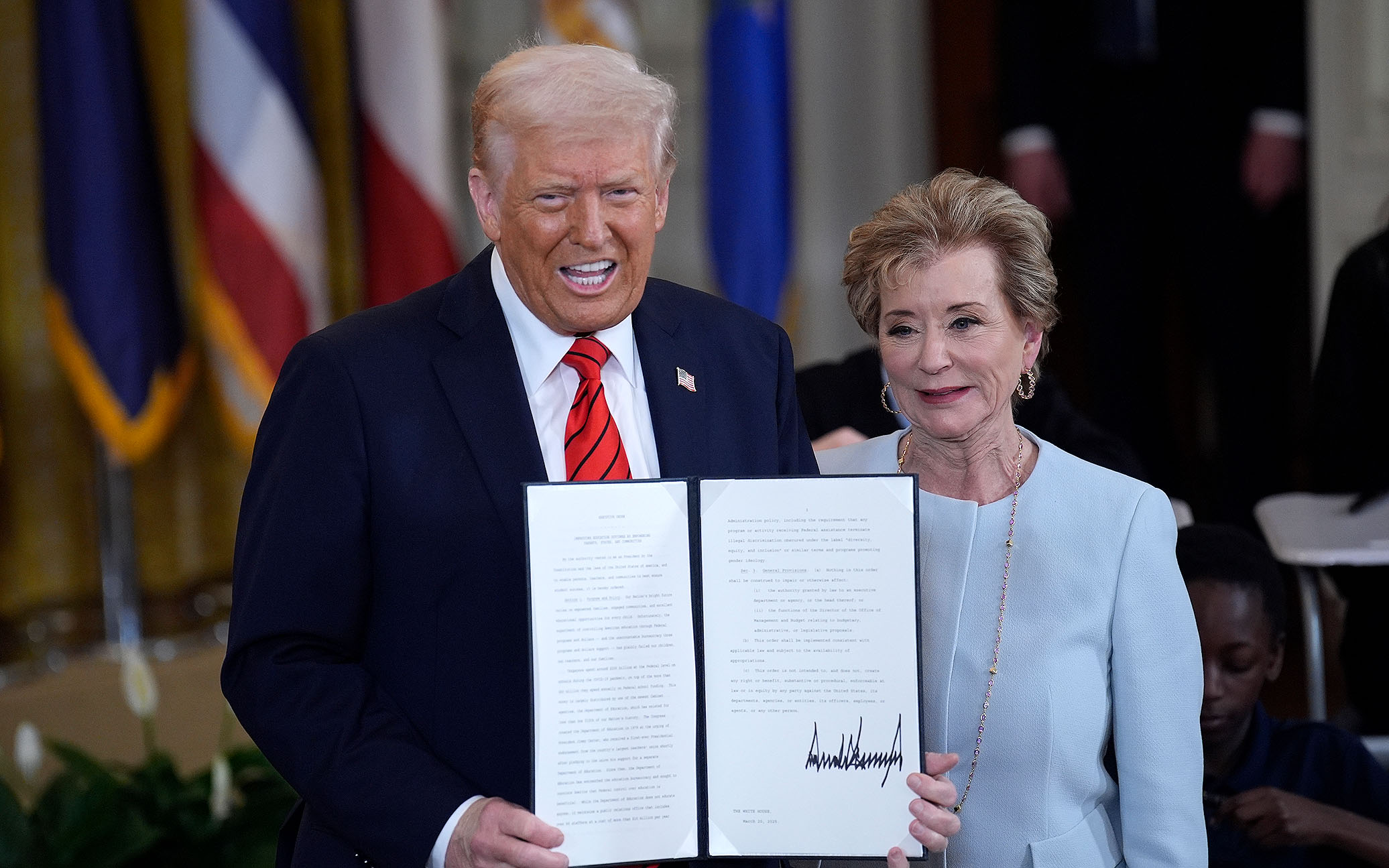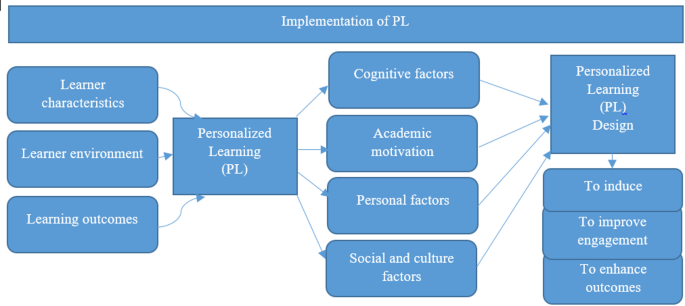Report on Proposed Restructuring of U.S. Special Education Oversight and its Implications for Sustainable Development Goals
1.0 Executive Summary
This report details the proposed transfer of oversight for special education programs from the U.S. Department of Education to another federal agency. The proposal, part of a broader initiative to close the Department of Education, raises significant concerns regarding its alignment with international commitments to the Sustainable Development Goals (SDGs), particularly SDG 4 (Quality Education), SDG 10 (Reduced Inequalities), and SDG 16 (Peace, Justice, and Strong Institutions). Stakeholders warn that this administrative shift could undermine decades of progress in inclusive education and weaken the institutional frameworks designed to protect the rights of students with disabilities.
2.0 Proposed Administrative and Institutional Changes
2.1 Transfer of Oversight
The U.S. Department of Education is actively exploring the transfer of special education programs to a different federal entity, with the Department of Health and Human Services (HHS) identified as a potential recipient. This action aligns with stated administration goals to dismantle the Department of Education and return educational authority to state levels. Key details of the proposal include:
- Stated Objective: To fulfill pledges by the President and the Secretary of Education to close the Department of Education.
- Agency Discussions: The Department of Education has confirmed it is in discussions with other federal agencies to manage the transition without service interruption.
- Funding Assurance: Officials have committed to protecting federal funding streams that support students with disabilities throughout this process.
2.2 Preceding Institutional Upheaval
The proposed transfer follows a period of significant disruption within the Department of Education’s Office of Special Education and Rehabilitative Services. Recent staff reductions have left the Office of Special Education Programs (OSEP), which administers the Individuals with Disabilities Education Act (IDEA), with a critically reduced workforce. This has already compromised the institution’s capacity to fulfill its statutory obligations, a situation that the proposed transfer could exacerbate.
3.0 Analysis of Implications for Sustainable Development Goals (SDGs)
3.1 SDG 4: Quality Education
The proposal directly challenges the principles of SDG 4, which calls for inclusive and equitable quality education for all. The potential negative impacts include:
- Threat to Target 4.5: By removing special education from the primary federal education body, the move risks creating barriers to equal access for students with disabilities, contradicting the goal of ensuring access for all vulnerable groups.
- Undermining Target 4.a: Siloing special education support in a non-education agency undermines the development of inclusive learning environments. Effective inclusion requires integrating disability support into all aspects of educational policy and practice, not separating it.
3.2 SDG 10: Reduced Inequalities
The administrative restructuring poses a significant threat to SDG 10, which aims to reduce inequality and promote the inclusion of all persons, irrespective of disability.
- Contradiction of Target 10.2: The proposal could reverse progress on the social and political inclusion of students with disabilities within the mainstream education system, effectively segregating their needs and oversight from their peers.
- Risk to Target 10.3: Shifting oversight away from education experts threatens to reduce equality of outcome. It may lead to policies that are not grounded in educational best practices, thereby creating discriminatory effects and undermining the principle of equal opportunity.
3.3 SDG 16: Peace, Justice, and Strong Institutions
The plan raises questions about the stability and effectiveness of the institutions responsible for upholding disability rights, a key component of SDG 16.
- Erosion of Target 16.6: The dismantling of OSEP and the transfer of its responsibilities threaten the existence of an effective, accountable, and transparent institution dedicated to special education. A new agency, such as HHS, may lack the specific institutional knowledge and legal framework to provide adequate oversight.
- Legal and Jurisdictional Concerns: The Individuals with Disabilities Education Act (IDEA) explicitly designates the Secretary of Education as the responsible authority. Transferring this responsibility could violate federal law, weakening the rule of law and the very institutions designed to protect vulnerable populations.
4.0 Stakeholder Concerns and Expert Analysis
Education and disability advocates have voiced strong opposition to the proposed changes, highlighting several critical risks. The primary concerns are as follows:
- Disregard for Educational Needs: The move is viewed as a fundamental misunderstanding of special education as an integral component of the overall educational system, rather than a separate health or social service.
- Reversal of Inclusionary Progress: Experts warn that separating special education oversight from the Department of Education would undermine 50 years of progress toward fully including students with disabilities in all aspects of public education.
- Lack of Specialized Expertise: Transferring oversight to an agency like HHS would mean losing the specialized expertise in educational law, data collection, and state monitoring that currently resides within the Department of Education. As one expert noted, this is akin to expecting a pediatrician to function as a teacher.
- Violation of Federal Law: Legal experts and former officials assert that the transfer would be a contravention of IDEA, which legally mandates that the Secretary of Education is the sole agency head responsible for its implementation and oversight.
Analysis of SDGs in the Article
1. Which SDGs are addressed or connected to the issues highlighted in the article?
-
SDG 4: Quality Education
- The entire article revolves around the provision of education for students with disabilities. It discusses the potential move of special education programs from the Department of Education, which directly impacts the goal of ensuring inclusive and equitable quality education for all. The concerns raised by advocates about undermining services and disregarding educational needs are central to this SDG.
-
SDG 10: Reduced Inequalities
- The article focuses on a vulnerable group—students with disabilities. The debate over the changes to special education oversight is fundamentally about ensuring equal opportunity and inclusion for these students within the broader education system. The potential “step backward” mentioned by an advocate highlights the risk of increasing inequality for this population.
-
SDG 16: Peace, Justice and Strong Institutions
- The article questions the effectiveness, accountability, and legality of the proposed institutional changes. It discusses the dismantling of the Office of Special Education and Rehabilitative Services, the legality of moving programs out of the Department of Education, and whether a “skeleton staff” can fulfill statutory requirements. This relates directly to the goal of building effective and accountable institutions responsible for enforcing laws like the Individuals with Disabilities Education Act (IDEA).
2. What specific targets under those SDGs can be identified based on the article’s content?
-
Under SDG 4 (Quality Education):
- Target 4.5: “ensure equal access to all levels of education … for the vulnerable, including persons with disabilities.” The article’s core subject is the system designed to provide this equal access for students with disabilities, and the potential threat to it.
- Target 4.a: “Build and upgrade education facilities that are … disability … sensitive and provide … inclusive and effective learning environments for all.” The article discusses the institutional framework (oversight, funding, expertise) that creates an “effective learning environment,” which is now at risk.
-
Under SDG 10 (Reduced Inequalities):
- Target 10.2: “empower and promote the social … inclusion of all, irrespective of … disability.” The article highlights advocates’ fears that siloing special education supports would undermine the “achievements of the last 50 years to fully include special education students in every aspect of public education.”
- Target 10.3: “Ensure equal opportunity and reduce inequalities of outcome, including by eliminating discriminatory … policies and practices and promoting appropriate legislation.” The discussion centers on the proper implementation and oversight of the Individuals with Disabilities Education Act (IDEA), a key piece of legislation for ensuring equal opportunity.
-
Under SDG 16 (Peace, Justice and Strong Institutions):
- Target 16.6: “Develop effective, accountable and transparent institutions at all levels.” The article raises serious concerns about the future effectiveness and accountability of the federal office overseeing special education, citing massive layoffs that would leave a “skeleton staff” unable to “fulfill the statutory requirements of IDEA.”
- Target 16.b: “Promote and enforce non-discriminatory laws and policies for sustainable development.” The article discusses the potential weakening of the enforcement mechanism for IDEA, a critical non-discriminatory law, and questions the legality of transferring the agency responsible for its oversight.
3. Are there any indicators mentioned or implied in the article that can be used to measure progress towards the identified targets?
-
Indicators for SDG 4 & 10 Targets:
- Level of Federal Funding: The article explicitly mentions the commitment to “protecting the federal funding streams that support our nation’s students with disabilities.” The maintenance or increase of this funding is an implied indicator of commitment to equal access.
- Effective Implementation of IDEA: The ability of the responsible federal office to “fulfill the statutory requirements of IDEA” is a key implied indicator. The article suggests this is at risk.
- Inclusion in Mainstream Education: An advocate’s comment about the goal to “fully include special education students in every aspect of public education” implies that the rate of inclusion is a measure of success.
-
Indicators for SDG 16 Targets:
- Staffing Levels of Oversight Bodies: The article points to the layoff of 121 employees from the Office of Special Education and Rehabilitative Services as a critical issue. The number of dedicated, expert staff is a direct indicator of the institution’s capacity and effectiveness.
- Legal and Jurisdictional Integrity: The article questions the legality of the move, noting that IDEA “clearly designates the Secretary of Education as the only agency head responsible.” Adherence to this legal mandate is an indicator of institutional accountability and the rule of law.
Summary of Findings
| SDGs | Targets | Indicators (Implied or Mentioned in the Article) |
|---|---|---|
| SDG 4: Quality Education |
|
|
| SDG 10: Reduced Inequalities |
|
|
| SDG 16: Peace, Justice and Strong Institutions |
|
|
Source: disabilityscoop.com







